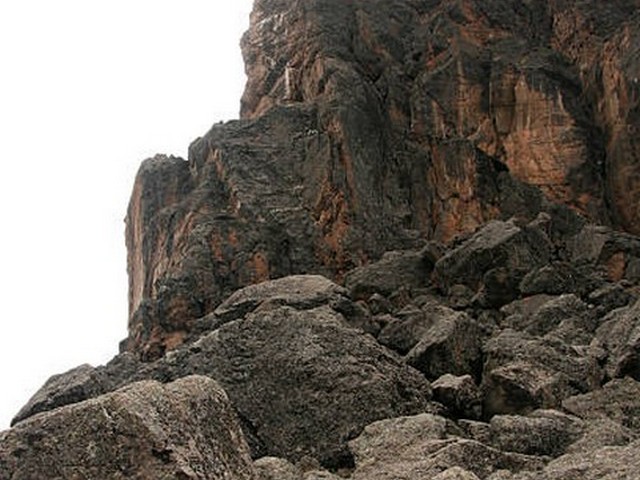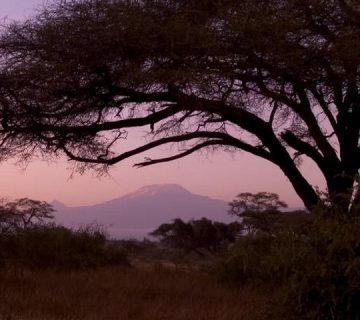Kilimanjaro Gear For Extreme Weather Conditions: Essential Insights From KCTE
Introduction: Why the Right Gear Matters for Your Kilimanjaro Adventure
Standing as a beacon of resilience and beauty, Mount Kilimanjaro calls to adventurers from around the globe with its snow-capped peak and breathtaking landscapes. However, the path to its summit is as challenging as it is beautiful, particularly when it comes to weather. At Kilimanjaro Centre for Trekking and Ecotourism (KCTE), we understand that the key to a successful and enjoyable climb lies in preparation—especially when it comes to choosing the right gear for extreme weather conditions. In this post, we'll guide you through selecting the essential gear that will help you face Kilimanjaro's diverse climates, ensuring your journey is memorable for all the right reasons. So, lace up your boots, and let's prepare to conquer the roof of Africa!
Understanding Kilimanjaro's Climate Zones
Before diving into gear specifics, it's crucial to understand the unique climate zones you'll traverse on your climb. Kilimanjaro features five major ecological zones: rainforest, heath, moorland, alpine desert, and the arctic summit zone. Each zone presents its own set of challenges, from wet and humid rainforests to the icy cold of the summit. Preparing for these variable conditions is paramount, and choosing adaptable, durable gear is your first step towards summit success.
Essential Gear for Kilimanjaro's Extremes
1. Layering: Your Best Defense Against the Elements
Base Layer:
Start with a moisture-wicking base layer. This keeps you dry by drawing sweat away from your skin, which is essential in both warm and cold temperatures. Look for materials like merino wool or synthetic fibers designed for thermal regulation.
Mid Layer:
Your mid-layer should provide insulation. A lightweight, breathable fleece or a down jacket will offer warmth without the bulk, adapting easily as you ascend through colder zones.
Outer Layer:
A waterproof and windproof jacket and pants are critical. They serve as your shield against fierce winds and unexpected rain or snow. Ensure your outer layer is also breathable to prevent overheating.
2. Footwear: Foundation of Your Trek
Selecting the right footwear is non-negotiable. A sturdy pair of hiking boots with good ankle support and a grippy sole is essential. They should be well broken-in to avoid blisters. Consider waterproof materials like Gore-Tex for added protection against moisture.
3. Headgear and Gloves: Protecting the Extremities
Headgear:
A warm beanie or a balaclava will protect your head and face from cold winds at higher altitudes. Additionally, bring a brimmed hat or a cap for sun protection during the earlier stages of your climb.
Gloves:
Invest in a pair of waterproof, insulated gloves. These are crucial for comfort and dexterity, especially near the summit where temperatures can drop below freezing.
4. Backpacks and Packing Essentials
A durable, weather-resistant backpack is your companion carrying all your essentials. It should be comfortable, with adjustable straps and sufficient capacity (usually 35-50 liters). Pack rain covers and use dry bags inside to keep your gear dry.
5. Sleeping Gear for Harsh Nights
A four-season sleeping bag is recommended to handle the low nighttime temperatures, especially in the higher camps. Pair this with an insulated sleeping pad to protect against the cold ground.
6. Technical Gear and Accessories
Trekking Poles:
These are invaluable for reducing the impact on your knees and improving balance on uneven terrains.
Sunglasses and Sunscreen:
High UV protection sunglasses and high SPF sunscreen are vital to protect against intense sun and reflective snow.
Hydration Systems:
Staying hydrated is crucial. Insulated water bottles or a hydration bladder with a freeze-proof tube can help maintain liquid state in cold conditions.
FAQs: Gear Up for Success on Kilimanjaro
Q1: What is the best material for clothing on Kilimanjaro?
A: Choose moisture-wicking fabrics for base layers, breathable fleeces for mid-layers, and waterproof yet breathable materials for outer layers.
Q2: How many layers are necessary for summit night?
A: On summit night, you may wear up to five layers on top (including your outer shell) and three layers on the bottom. Adjust based on your personal comfort and the weather.
Q3: Are rental gears a good option?
A: Renting gear can be a cost-effective option, especially for high-quality, high-cost items like sleeping bags and down jackets. KCTE offers rental options for essential gear.
Q4: How do I prepare for the different climate zones?
A: Pack layers that you can easily put on or take off as temperatures change. Versatility is key in your clothing choices.
Conclusion: Ready for the Roof of Africa?
Equipped with the right gear, you're now ready to face the majestic Mount Kilimanjaro. Remember, the journey to the summit is as rewarding as the destination itself. At Kilimanjaro Centre for Trekking and Ecotourism (KCTE), we're dedicated to providing you with not just the expertise, but also the support and motivation to make your climb successful and enjoyable. Book your Kilimanjaro climbing adventure with us today, and let us help you gear up for a life-changing experience. Here at KCTE, your adventure begins with confidence and ends in exhilaration. See you at the summit!
For more information and to start your journey, visit KCTE's Official Website and turn your dreams into reality. Let's conquer Kilimanjaro together!




